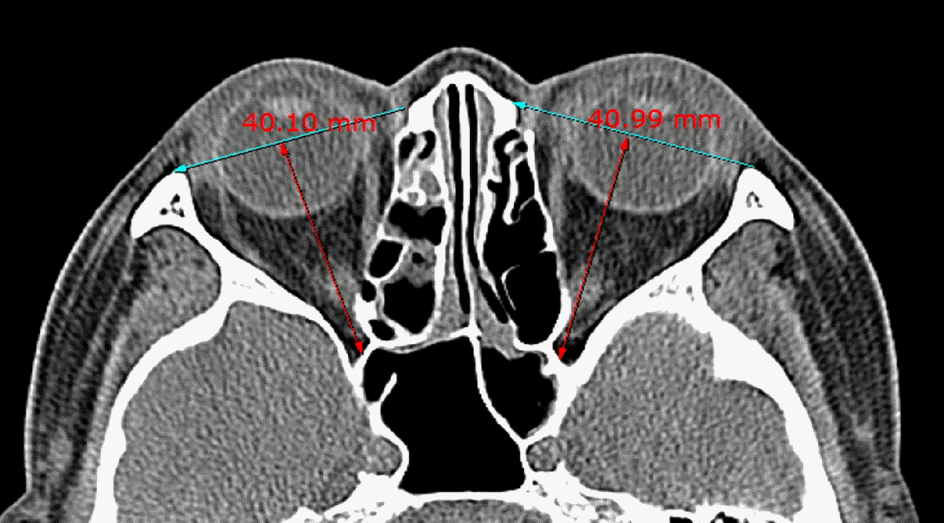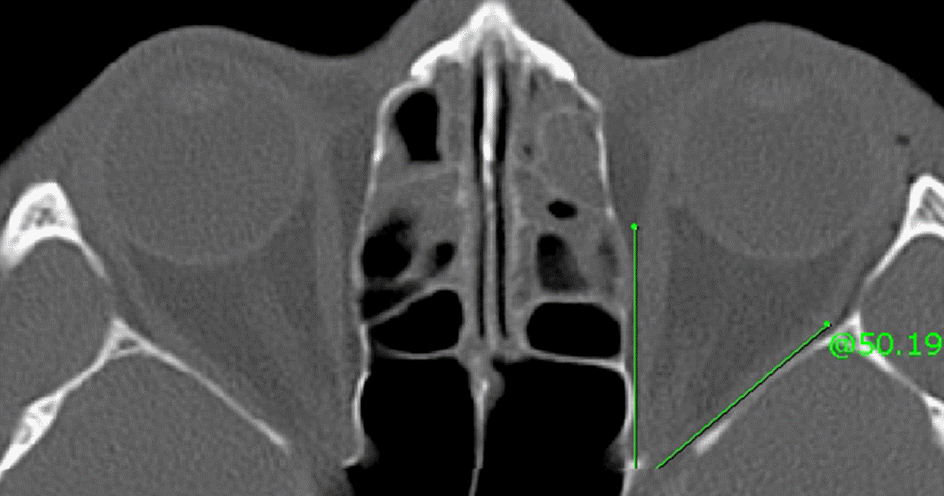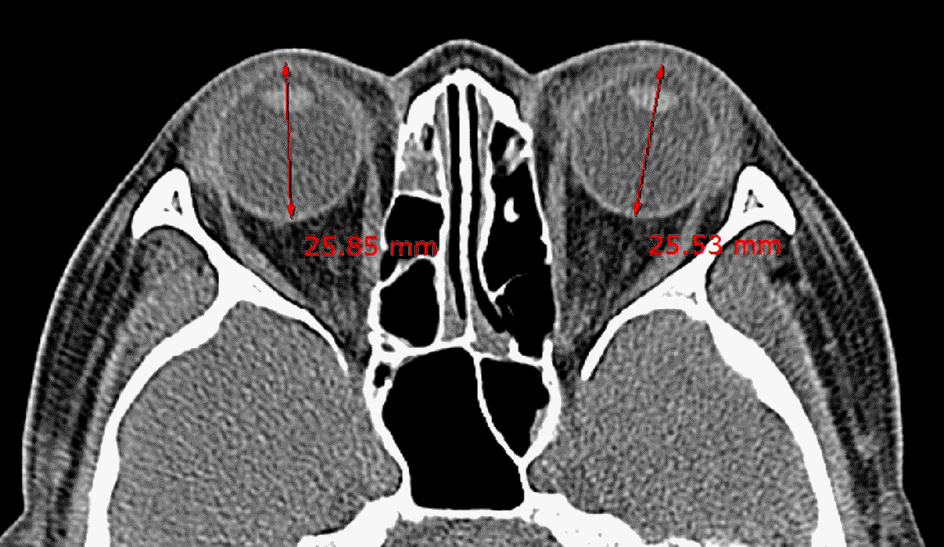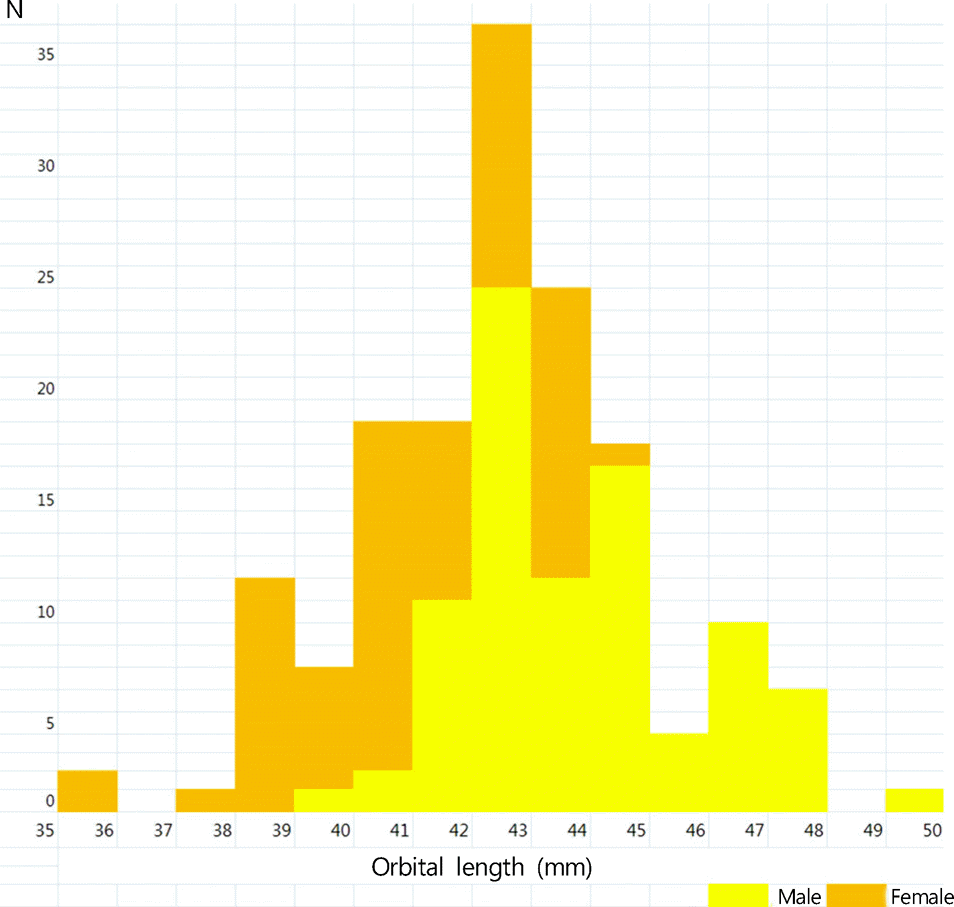Abstract
Purpose
To present easily measurable 2D orbit computed tomography (CT) reference data that can be used in a preoperative study for orbital decompression and classification of individual orbital morphologies.
Methods
The study sample was composed of 77 patients with orbital contusion (42 Asian males + 35 Asian females = 154 orbits) who visited the emergency room of the Korea University Guro Hospital from September 2012 to June 2013. Patients with orbital wall fracture, retrobulbar hemorrhage, or eyeball rupture were excluded. Medical records including 2D orbit or facial bone CT were retrospectively reviewed and 4 orbital parameters (orbital length, OL; globe length, GL; GL/OL ratio and 2D cone angle) were measured.
Go to : 
References
1. Bartalena L, Pinchera A, Marcocci C. Management of Graves' ophthalmopathy: reality and perspectives. Endocr Rev. 2000; 21:168–99.

3. Borumandi F, Hammer B, Kamer L, von Arx G. How predictable is exophthalmos reduction in Graves' orbitopathy? A review of the literature. Br J Ophthalmol. 2011; 95:1625–30.

4. Borumandi F, Hammer B, Noser H, Kamer L. Classification of orbital morphology for decompression surgery in Graves' orbitopathy: two-dimensional versus three-dimensional orbital parameters. Br J Ophthalmol. 2013; 97:659–62.

5. McKeag D, Lane C, Lazarus JH, et al. Clinical features of dysthyroid optic neuropathy: a European Group on Graves' Orbitopathy (EUGOGO) survey. Br J Ophthalmol. 2007; 91:455–8.

6. Mourits MP, Bijl H, Altea MA, et al. Outcome of orbital decompression for disfiguring proptosis in patients with Graves' orbitopathy using various surgical procedures. Br J Ophthalmol. 2009; 93:1518–23.
7. Baujat B, Krastinova D, Bach CA, et al. Orbital morphology in exophthalmos and exorbitism. Plast Reconstr Surg. 2006; 117:542–50.

8. Campi I, Vannucchi GM, Minetti AM, et al. A quantitative method for assessing the degree of axial proptosis in relation to orbital tissue involvement in Graves' orbitopathy. Ophthalmology. 2013; 120:1092–8.

Go to : 
 | Figure 2.Orbital length: antero-posterior orbital length defined by the distance between orbital apex and the middle of the anterior orbital boundary line. The measurement was performed at the level of the inferior end of the superior orbital fissure. |
 | Figure 3.Cone angle: cone angle, defined by the angle between the medial and lateral orbital wall. The measurement was performed at the level of the optic canal. |




 PDF
PDF ePub
ePub Citation
Citation Print
Print




 XML Download
XML Download